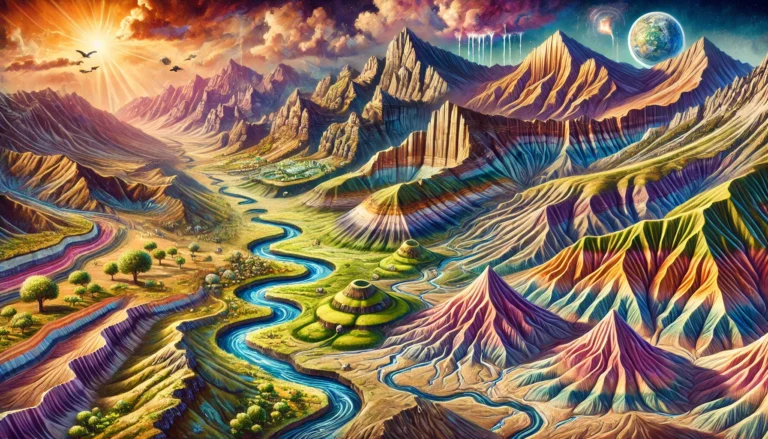Factors Causing Ocean Currents
Imagine the ocean as a vast, interconnected system of highways where water moves under the influence of multiple forces. Just as a river’s flow is shaped by gravity, terrain, and obstacles, ocean currents are driven by various internal and external factors. These factors work together to set the ocean in motion, sometimes creating powerful, steady currents and, at other times, seasonal variations.
1. Factors Related to Earth’s Rotation
- Coriolis Force:
The Earth rotates from west to east, which creates a deflective force known as the Coriolis force. This causes moving water to veer to the right in the Northern Hemisphere and to the left in the Southern Hemisphere, shaping the direction of ocean currents. - Gravitational Force:
Just as gravity pulls rivers downhill, it also influences ocean currents, ensuring that water flows in a balanced manner across different oceanic regions.
2. Oceanic Factors (Internal Influences on Currents)
- Temperature Difference:
- The equator receives more solar energy than the poles, creating a temperature gradient.
- Warm water at the equator is lighter and expands, while colder water near the poles is denser and contracts.
- This density variation causes warm equatorial water to flow towards the poles and cold polar water to move towards the equator, forming major ocean currents.
- Salinity Difference:
- Saltier water is denser than less salty water.
- High salinity areas (e.g., the Mediterranean Sea) generate sinking currents, while lower salinity areas (e.g., near river mouths) create upward movements.
- Density Difference:
- Water moves from areas of lower density to areas of higher density.
- Density is influenced by temperature, salinity, and pressure—a combination of these factors drives deep ocean currents.
3. External Oceanic Factors (Surface Influences on Currents)
- Air Pressure and Winds:
- High atmospheric pressure regions have lower water volume, while low-pressure areas have higher water levels.
- Water moves from high-level to low-level areas, creating surface currents.
- Prevailing Winds:
- Winds blowing consistently across the ocean drag surface water with them, generating currents.
- Example: The Monsoon Winds in the Indian Ocean reverse direction twice a year, causing seasonal changes in ocean currents.
- Rainfall and Evaporation:
- High rainfall & low evaporation = Higher water levels & lower salinity.
- Low rainfall & high evaporation = Lower water levels & higher salinity.
- Water moves from high-level to low-level regions, affecting current flow.
4. Modifying Factors
Once ocean currents are set in motion, their path is influenced by:
- Coastline Shape & Configuration:
- Currents deflect when they encounter continents, shaping gyres and circulation patterns.
- Ocean Bottom Relief:
- Underwater mountains, ridges, and trenches alter current directions.
- Seasonal Variations:
- Example: The Indian Ocean currents change with the monsoon seasons, moving in opposite directions in summer and winter.
Conclusion
Ocean currents are not random; they follow patterns shaped by a combination of Earth’s rotation, temperature and salinity differences, winds, pressure variations, and geographic features. These currents influence climate, marine life, and human activities like navigation and fishing.





